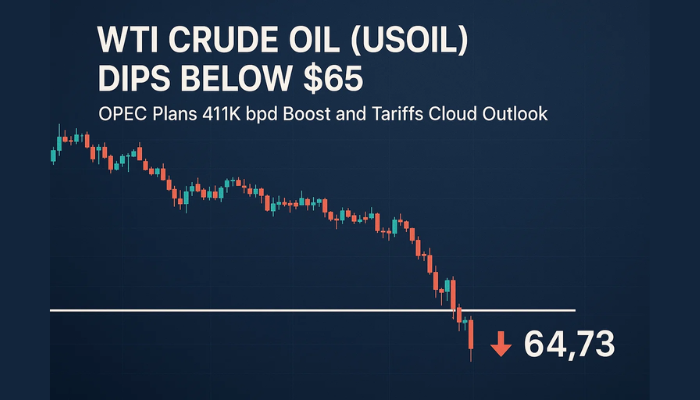Oil Prices Below the 100 SMA as EIA Crude Inventory Builds
The crude market is currently experiencing a downward trend, with Oil prices falling to $77.50, influenced by a combination of factors

The crude market is currently experiencing a downward trend, with Oil prices falling to $77.50, influenced by a combination of factors such as potential oversupply and demand concerns. Today’s EIA inventory report showed a buildup in crude stocks, which weighs further on Oil prices, and the overall sentiment remains negative.

The current bearish shift in crude oil prices indicates lack of confidence, aided by a drop in EIA crude inventory for last week. Throughout the trading session, WTI futures were generally bearish, plunging to a low of $77.50, and the decline escalated after the EIA inventories were released, albeit the trend remains adverse.
WTI Crude Oil Chart Daily – The 100 SMA Is Under Attack
Crude Oil Inventory Report – Week of May 17
Key Data Points:
- Crude Oil Inventory Build: 1.825 million barrels (versus an estimated drawdown of -2.547 million barrels)
- Gasoline Inventory Drawdown: -0.945 million barrels (versus an estimated drawdown of -0.729 million barrels)
- Distillates Inventory Build: 0.379 million barrels (versus an estimated drawdown of -0.394 million barrels)
- Cushing Inventory Build: 1.325 million barrels (versus last week’s drawdown of -0.341 million barrels)
- Refining Utilization: Increased by 1.3% (versus an expected increase of 0.5%). Last week’s increase was +1.9%.
- Crude Production: Remained unchanged at 13.1 million barrels compared to last week.
Analysis:
The weekly crude oil inventory report for the week ending May 17th revealed several notable data points:
- Crude Oil Inventory Build: Despite expectations of a drawdown, crude oil inventories increased by 1.825 million barrels. This build indicates a higher-than-anticipated level of supply, which could put downward pressure on oil prices as markets digest the surplus.
- Gasoline Inventory Drawdown: Gasoline inventories decreased by -0.945 million barrels, slightly more than the estimated drawdown. This drawdown suggests stronger demand or reduced production of gasoline, which could support gasoline prices.
- Distillates Inventory Build: Distillates, including diesel and heating oil, saw a build of 0.379 million barrels, contrary to expectations of a drawdown. This build could indicate weaker demand or increased production of distillate products.
- Cushing Inventory Build: Inventories at the Cushing, Oklahoma storage hub increased by 1.325 million barrels, reversing the drawdown seen in the previous week. This build suggests a buildup of supply at the key storage facility, which could influence pricing dynamics.
- Refining Utilization: Refining utilization increased by 1.3%, surpassing expectations and indicating higher refinery activity. Increased refining utilization typically leads to higher production of refined petroleum products such as gasoline and diesel.
- Crude Production: Crude oil production remained unchanged at 13.1 million barrels, signaling stability in output levels.
Market Impact:
- Crude Oil Prices: The unexpected build in crude oil inventories could weigh on crude oil prices as markets react to the surplus supply. However, the drawdown in gasoline inventories and the increase in refining utilization could provide some support to prices.
- Gasoline Prices: The drawdown in gasoline inventories, coupled with the increase in refining utilization, may support gasoline prices if demand remains strong.
- Distillates and Cushing Inventories: The build in distillates and Cushing inventories may put downward pressure on prices for these products, especially if demand remains subdued.
- Market Sentiment: Overall, the mixed inventory report is likely to influence market sentiment, with traders assessing the implications of supply and demand dynamics on future price movements.
The latest crude oil inventory report presents a mixed picture, with unexpected builds in crude oil and distillates inventories, a drawdown in gasoline inventories, and an increase in refining utilization. Traders and analysts will closely monitor market reactions to these data points to gauge the direction of oil prices in the near term.
US WTI Crude Oil Live Chart
- Check out our free forex signals
- Follow the top economic events on FX Leaders economic calendar
- Trade better, discover more Forex Trading Strategies
- Open a FREE Trading Account



